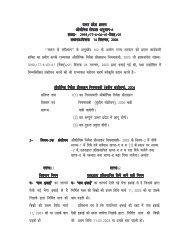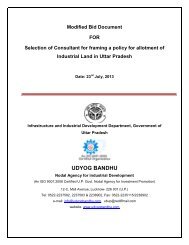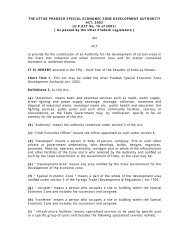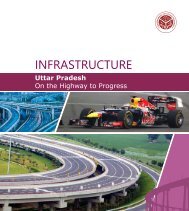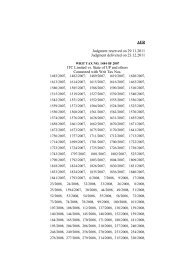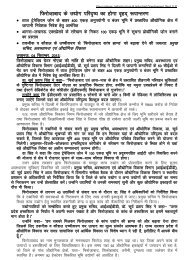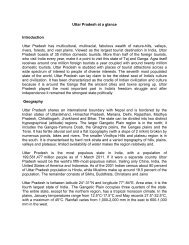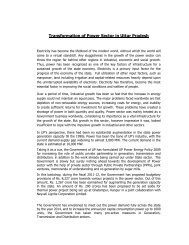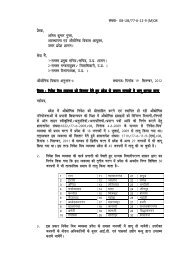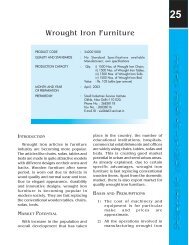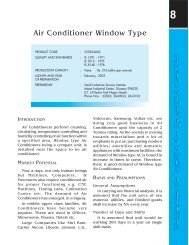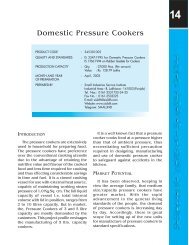PART - III - Udyog Bandhu
PART - III - Udyog Bandhu
PART - III - Udyog Bandhu
Create successful ePaper yourself
Turn your PDF publications into a flip-book with our unique Google optimized e-Paper software.
Based on the WACC, arrived as above, the FCF of each year is discounted to the presentperiod. This factor is known as the discounting factor.Discount factor =Discount factor of previous year(1 + WACC)In year 1, the discount factor is equal to 1. Thus, the discount factor of Company X for the firstyear will be as follows:Discount factor for year 1 = 1 / (1 + 0.1655) = 0.858Discount factor for year 2 = 1 / (1 + 0.1655) 2 = 0.736, and so on for year 3 etc.Therefore, for Company X, the computation of discounted cash flow (DCF) is as follows:Figure 5: DCF computation for Company XRs millionYear 1 Year 2 Year 3 Year 4 Year 5FCF 55 60 115 170 225Discounting factor based on WACC 0.858 0.736 0.632 0.542 0.465Discounted cash flows 47 44 73 92 105The value arrived through the submission of the DCF of the explicit period is known as theprimary value. The primary value of the business of Company X as computed above is Rs361 million.Terminal ValueThis value reflects the average business conditions of the Company that are expected to prevailover the long term in perpetuity i.e. beyond the explicit period. The DCF approach assumesthat by the terminal date, the business will have achieved a steady state and will be growing ata constant rate.At the end of the explicit period the terminal value is calculated as follows:Terminal Value = Terminal Cash flow (for last year of explicit period) * (1 + g)Discount Factor - gWhere; Discount Factor = Weighted Average Cost of Capital, and;g = Estimate of average long term growthrate of cash flows in perpetuity assumed to be 5%Therefore, for Company X, the computation of terminal value is as follows:142



